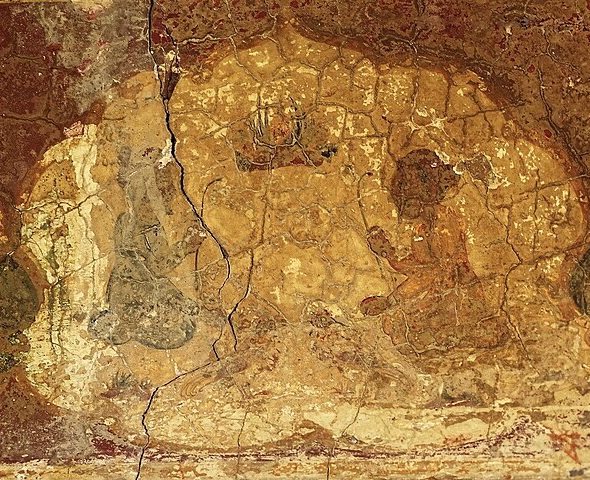NIHANGS or Nihang Singhs, originally known as Akalis or Akah Niharigs, are endearingly designated the Guru`s Knights or the Guru`s beloved, for the military ambience they still carry about them and the heroic style they continue to cultivate. They constitute a distinctive order among the Sikhs and are readily recognized by their dark blue loose apparel and their ample, peaked turbans festooned with quoits, insignia of the Khalsa and rosaries, all made of steel. They are always armed, and are usually seen mounted heavily laden with weapons such as swords, daggers, spears, rifles, shotguns and pistols.
NOHAR (29°12`N, 74°45`E) in Gariganagar district of Rajasthan, was visited by Guru Gobind Singh during hisjourney towards the South in 1706. He encamped near Chhip Talai, a pond southeast of the town. The local inhabitants, mostly followers of Jain and Vaisnava faiths, viewed the armed band of the Guru`s disciples with trepidation. The accidental trampling of a pigeon inside the town by a Sikh gave rise to much commotion. However, the Guru`s arrival at the scene pacified the people who were deeply impressed by his holy manner.
NIDHAN SINGH PANJHATTHA (d. 1839), soldier, minor commander and jdgirddr under Maharaja Ranjit Singh. He acquired the epithet Parijhattha, the "five handed," for his gallantry in the battle of Ten hill (1823). He singlehanded made five Pathans prisoners and captured their weapons. This act of valour earned him the title of Panjhatthd. In every battle, Nidhan Singh was among the first to advance and the last to retreat, and his body was covered all over with the marks of his courage. His great grand father, Dulcha Singh, had been in the service of Raja Ranjit Deo of Jammu, and his grandfather, Ram Dat Singh, is said to have served the Sukkarchakkia family under Mahari Singh.








